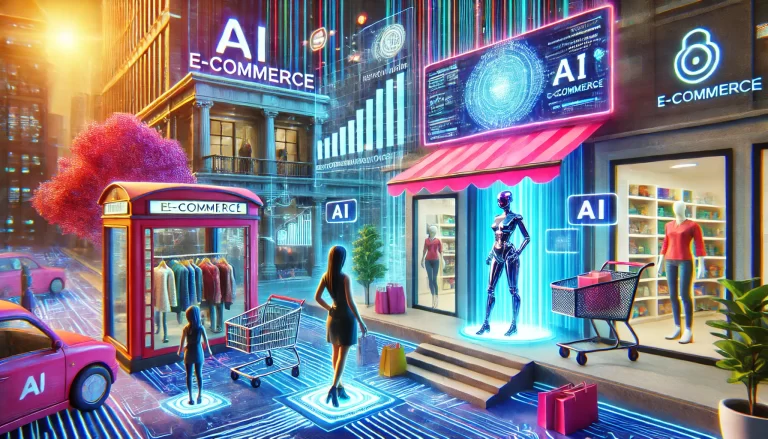The integration of artificial intelligence into e-commerce is like embarking on a journey where practicality and innovation drive progress. Recent industry shifts highlight the importance of this balance, but how can businesses not only adopt AI but also push beyond conventional boundaries?
Building the Foundation – Practical Applications
Success with AI starts by addressing immediate business needs through practical applications.
- Personalized Shopping Experiences: Amazon utilizes AI to analyze customer behavior, offering tailored product recommendations that enhance satisfaction and boost sales.
- Optimized Operations: Walmart employs AI for efficient inventory management, reducing costs and ensuring products are available when customers need them.
- Improved Customer Support: Sephora uses AI-powered chatbots to assist shoppers with product information and recommendations, leading to increased engagement and sales.
Focusing on these tangible benefits not only solves current challenges but also builds confidence in AI’s potential, paving the way for future investments.
Exploring Innovation – Pushing Boundaries
While practical solutions lay the groundwork, innovation propels e-commerce into new territories.
- Virtual Try-Ons: Warby Parker offers an app that uses AI and augmented reality to let customers virtually try on glasses, enhancing the online shopping experience.
- Voice-Activated Purchases: Alibaba’s smart assistants enable customers to make purchases using voice commands, simplifying the buying process.
- Predictive Styling Services: Stitch Fix combines AI algorithms with human expertise to deliver personalized fashion recommendations to subscribers.
Innovation thrives in environments that encourage creativity and are open to experimentation. Companies embracing this mindset are better positioned to discover transformative AI applications.
Merging Approaches: Focusing on the Customer
True advancement happens when practical solutions and innovative ideas come together with the customer at the center.
- Integrated Teams: Combining the skills of technologists and customer experience professionals leads to AI solutions that are both effective and user-friendly.
- Ethical AI Practices: Prioritizing data privacy and transparency builds trust, as demonstrated by companies that respect customer information.
- Adaptive Strategies: Zara uses AI to quickly respond to fashion trends and customer feedback, keeping their offerings relevant and desired.
A customer-driven approach ensures that AI initiatives not only improve efficiency but also enhance the overall shopping experience, fostering loyalty and long-term engagement.
Envisioning the Future: AI as the Essence of E-commerce
Imagine a day in the life of Alex, a savvy shopper in the not-so-distant future. As Alex wakes up, their AI personal assistant has already analyzed their schedule, the weather, and even upcoming social events. Noticing that Alex has a friend’s birthday party this weekend, the assistant suggests a selection of gift ideas, all tailored to the friend’s tastes and preferences.
Alex selects a recommended gift, a limited-edition watch. Using augmented reality glasses, Alex inspects the watch in 3D, interacting with its features as if it were physically in front of them. Satisfied, Alex places an order with a simple voice command. The AI assistant handles the transaction securely, automatically applying a loyalty discount and scheduling delivery to align with Alex’s availability.
Behind the scenes, AI algorithms coordinate with the retailer’s inventory system to confirm stock and initiate fulfillment. An autonomous delivery vehicle is dispatched, and through real-time tracking, Alex knows exactly when the package will arrive. The delivery is seamless, with the vehicle accessing Alex’s secure delivery locker using encrypted authentication.
Later, as Alex prepares for the party, the AI assistant suggests outfit options from Alex’s virtual wardrobe, some of which are new items available for instant purchase and delivery. Opting for a new accessory, Alex orders it, and within minutes, a drone delivers it directly to their doorstep.
Throughout the day, AI seamlessly integrates various services—managing Alex’s schedule, facilitating purchases, and even coordinating transportation to the party. Every interaction is intuitive, personalized, and efficient, making the technology virtually invisible. The e-commerce experience has become so tailored and frictionless that it feels like a natural extension of Alex’s daily life.
Conclusion
Integrating AI into e-commerce is more than adopting new technology, it’s about enhancing every facet of the customer journey. By combining practical applications with innovative thinking and keeping the customer at the heart of every decision, businesses can lead the way in the evolving retail landscape.
Are you ready to redefine your e-commerce strategy with AI?
Contact the team at Acquire.AI to discover how we can help you create customer-centric solutions that set your business apart.



